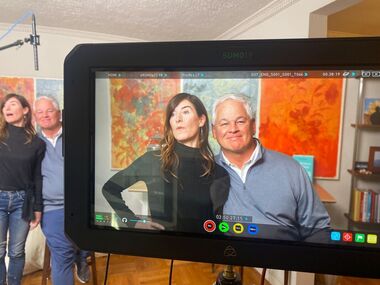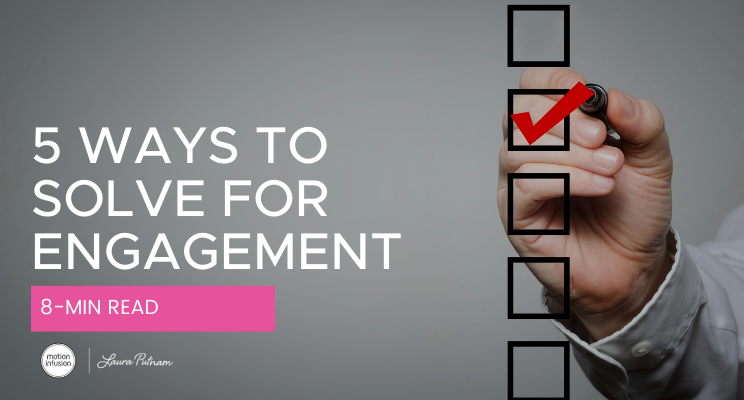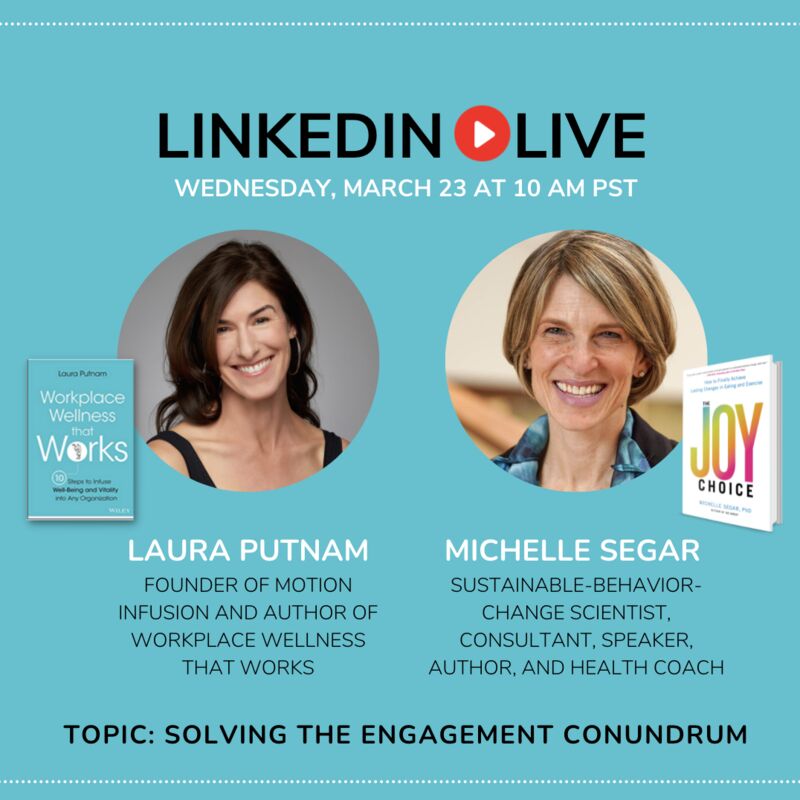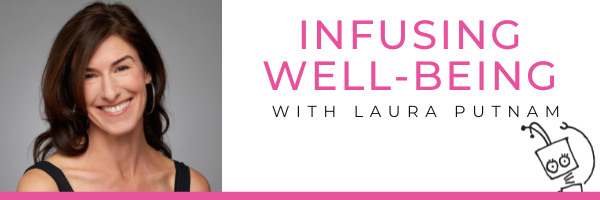|
Unlike the Field of Dreams, if you build it, they will not necessarily come. Whether it’s an app, a prescription, a wellness program, or a New Year’s resolution, getting ourselves to do the things we “should” do and want to do to improve our health and well-being is really hard. Closing the “knowing and doing” gap can feel impossible. And, if you’re in the business of inspiring others to engage with their health and well-being, you probably feel like you can never win. Engagement with workplace well-being is notoriously difficult. The good news is that when employees actually do participate, they achieve positive results. A recent Gartner survey, for example, found that participating employees had 23% higher levels of mental health, 17% higher levels of physical health and 23% were getting a better night’s sleep. In turn, these individual improvements translated into bottomline results for the organization, namely, higher performance and retention rates. The bad news is that these results only hold true for those employees who are participating - and over 60% continue to opt out, according to this same study. Engagement. How do we do it? This is the billion-dollar question that a trillion-dollar industry has been trying to unravel. Whether you're a self-starter trying to reach your fitness goals or a well-being activator working with others, here are a few ways we can increase engagement and reduce the knowing and doing gap: 1. Don’t count on willpower. Our brains are literally hard-wired to resist change. Making a short-term change or participating in a one-time event is easy. But making a permanent change is difficult because it requires ongoing motivation, self-regulation, and the right mindset. For so many of us, we know what we want to accomplish – say losing weight or getting on a regular exercise program – but the willpower we’re counting on seems to dissipate when we need it most. WHY? There’s a lot of research suggesting that willpower is a limited resource. The thinking and decision-making part of our brain, called the prefrontal cortex, is responsible for a variety of tasks: focusing, processing short-term memory, and solving abstract problems. It’s also responsible for motivation and resisting temptations. This is where we run into trouble. When we overload our prefrontal cortex – which is par for the course – whether it’s our job or just navigating our day to day lives in a chaotic world – we simply don’t have much prefrontal capacity leftover for staying motivating and resisting temptation, despite our best efforts. When our prefrontal cortex is fatigued we are only able to access the oldest and least plastic part of our brains in which our old, bad habits are stored. This helps explain why so few of us are able to keep our New Year’s resolution – or why the knowing and doing gap is so persistent. In our busy, overloaded, stressed out lives, our prefrontal cortex is simply maxed out and is out of gas to exercise restraint. My friend, Michelle Segar, shares more about this research in her new book, The Joy Choice, which releases April 26th. 2. “Trick” your brain into making a change. So, if our brains are hard-wired to resist change, how do we get ourselves to engage? The key lies in literally outsmarting our brain. Here's how we can: The first is to speak to the heart. You can start this process with a big-picture vision, aka “Me At My Best,” that has an emotional charge. Then, as you further engage in the process of making a change, find ways to tap into your deepest psychological needs. This includes things like feeling a sense of mastery, a sense of belonging, and a sense of fun. The more you can bring a playful attitude toward whatever you do, the more fun you’ll have along the way, and the more likely you’ll sustain a change. The second is to speak to the brain. This means getting very clear about exactly what you are hoping to accomplish, making sure that it is measurable and attainable. Breaking down a goal into tiny steps can also help. And the third is to make a plan. This includes strategies like rearranging your environment so that the task becomes easier. For example, if your goal is to eat healthier, arrange your refrigerator to set yourself up for success. 3. Navigate the currents. A couple of years ago, my fiancé Chris swam in an open water swimming event in Istanbul, Turkey. The day before the race, we all loaded up on boats to study the currents – getting clear about which currents to leverage and which back eddies to swim around. Swimmers knew that to do well in the race, not only did they need to be strong, they needed to be smart swimmers. They needed to navigate the currents. Applying this swimming in the Bosphorus Strait analogy, what would you say are the currents in your life? What currents are pushing you toward your vision of Me At My Best, and what currents are pushing against you? Once you’ve identified these currents, then think about how you can (a) leverage the positive currents that are working in your favor and (b) navigate around the back eddies that are working against you. 4. Recognize that we need to take collective action. The pursuit of better health and well-being needs to be a collective one, in which we, together, are addressing the social factors that ensure better health and well-being for not just a few but all . Here’s the thing: Only 20% of health is a result of healthcare and personal choices; the rest is largely determined by social factors or social determinants of health. These are the conditions in which we live, work, go to school, and play. This includes housing, safe neighborhoods, good schools, economic stability. 5. Be the change. As it turns out, every behavior and choice we make impacts others, even those who are only indirectly connected with us. This is what’s known as the “social contagion effect,” a phenomenon studied by Harvard physician and researcher Nicholas Christakis and the University of California, San Diego, professor James Fowler. Behaviors, they found in their seminal 2008 study, literally travel through social networks much the way a virus does. Each of us can create a ripple effect. And, as we move up an organization, the ripple effect just gets a little bigger – meaning that our responsibility to be the change grows.  I HAVE SOME EXCITING NEWS TO SHARE! 🎉 Mi Wellness University is coming soon! I’ll have online courses available for you to partake, and the first course to hit the library is (drum roll please), Got Engagement?
0 Comments
Leave a Reply. |
Follow laura on social:Website by Brand Genie
|
join laura's monthly newsletter
|





